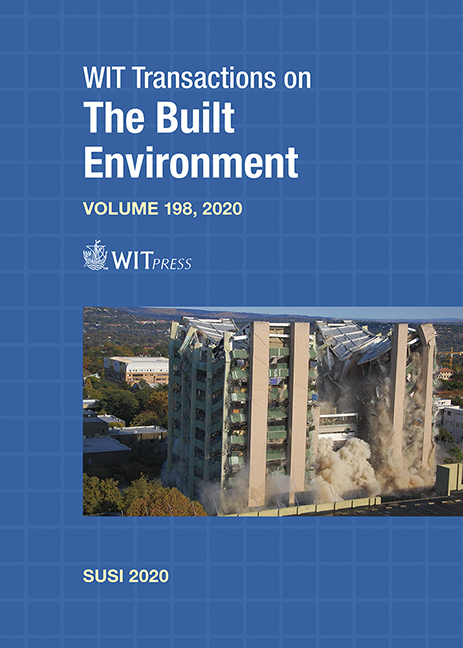PRELIMINARY STRUCTURAL ANALYSIS STUDY OF THE CHINESE COMPLEX BRACKET SYSTEMS
Price
Free (open access)
Transaction
Volume
198
Pages
11
Page Range
111 - 121
Published
2020
Paper DOI
10.2495/SUSI200091
Copyright
WIT Press
Author(s)
SOK YEE YEO, YIJIE GAO, KOHEI KOMATSU, YU-LIN CHUNG, WEN-SHAO CHANG, MIN-FU HSU
Abstract
A series of in-plane structural studies of the traditional timber structures have been conducted since the 1999 Chi-Chi earthquake. Most of these studies were largely based on quasi-static tests, limited modelling studies are found on the dynamic behaviour of these structural types, in particular, the complex bracket systems. Owing to their complexity and the lack of proper seismic evaluation methods for this type of oriental timber structures, structural engineers often assume these timber connections bear no moment resistance, and thus, will tend to simplify them to two idealized extreme forms – fully rigid or fully-hinge/pin joint. Hence, the predicted outcomes often appeared to be unrealistic as they do not truly reflect the actual behaviour of the oriental timber structures. Under-estimation not only gives the public a misguided perception that traditional timber structures are weak and not durable, it also undermines its true seismic capability. From past experimental results, it is understood that oriental timber joints generally behaved like semi-rigid joints than hinges or pin, and the overall stiffness of the global structure is related to vertical loads, friction and partial embedment of wood fibers between contact surfaces. Close-form analytical models have been derived and the predictions fit well with the test results. For verification sake, the above models were subjected to two examinations. Firstly, the models’ assumptions and calculated values were cross-validated with past dynamic tests of complex bracket sets with various vertical loads and structural system designs. Next, the calculated assumptions were applied to conventional numerical modelling software and the predictions were cross-referenced with test results. Preliminary results from the above examinations revealed that the predicted models and anticipated weak points of the global structures were generally in good agreement with the dynamic test results, hence the assumptions made generally work well in both static and dynamic tests.
Keywords
historical timber structures, complex brackets, shaking table tests





